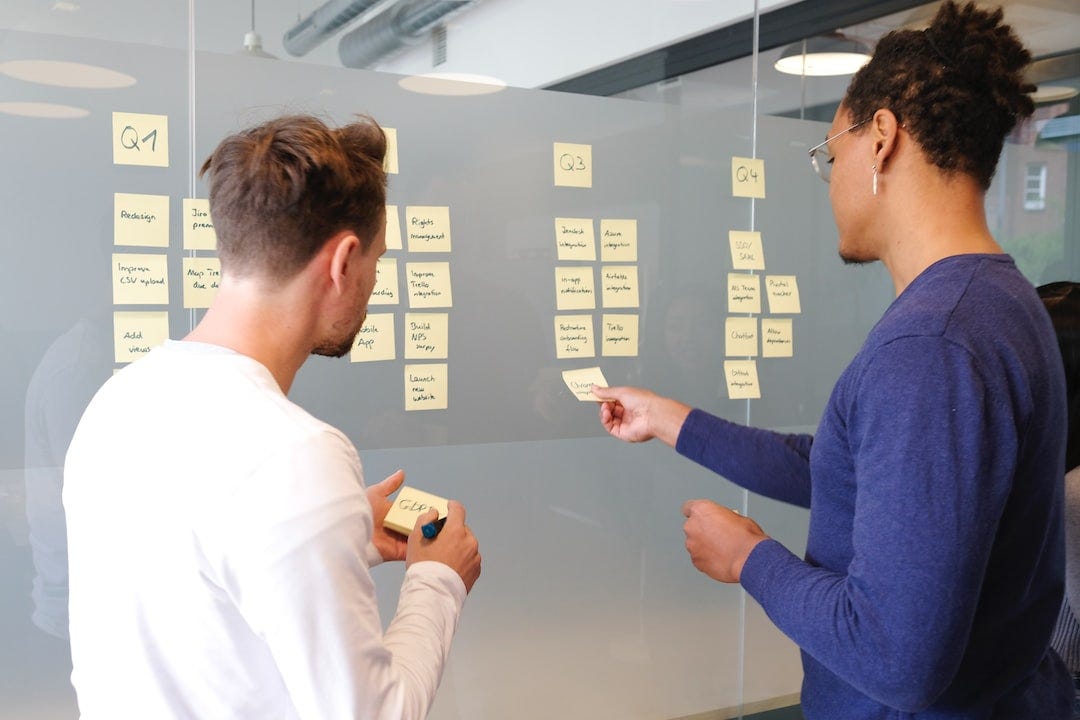Project governance is the process by which projects are planned, monitored, and controlled. It involves making decisions about what the project should achieve, how it should be structured, and how it will be managed and monitored.
Good project governance can help to ensure that projects are delivered on time, within budget and to the required quality standards. It can also help to improve communication between project stakeholders and make it easier to identify and resolve issues as they arise.
With the help of different project management systems, companies can achieve good governance for their projects. Here are some tips on how to improve project governance in your organization. Unfortunately, the development of project management solutions is not progressing as quickly.
In a poll conducted recently, just 35 percent of project managers reported being “somewhat or very happy” with the mechanisms in place.
However, there are some methods that can help to improve project governance if implemented properly. In this post, we will discuss some of these methods.
What is Project Governance?
Project governance is an oversight role that spans the project life cycle and is in line with the organization’s governance model. It gives the project manager and team structure, procedures, decision-making models, and tools for doing so while ensuring the project is successfully completed.
The system of project governance provides a thorough approach to regulating the project and guaranteeing its success by defining, documenting, and communicating consistent project processes.

Governance establishes duties, obligations, and liabilities for the success of the project, regulates the efficacy of the project manager, and provides a framework for decision-making regarding the project.
Imagine you are the project manager of a construction project. You have to juggle different stakeholders with their own agendas, keep an eye on the budget, and make sure that the construction workers are following safety protocols. All of this while trying to complete the project on time. This is where project governance comes in.
Project governance is a system of checks and balances that helps you monitor and control the progress of your project. It ensures that everyone involved in the project is aware of their roles and responsibilities and that the project is proceeding as planned.
Project Governance Components
There are different project governance models, but they all have the same goal: to ensure the project is completed successfully.
The three most common models are waterfall, agile, and hybrid.
- Waterfall Model: In this model, the project is divided into different phases, and each phase must be completed before moving on to the next one. This model is best suited for projects with well-defined requirements and deliverables.
- Agile Model: In this model, the project is divided into different sprints, and each sprint is completed in a short timeframe (usually 2–4 weeks). This model is best suited for projects that are constantly changing and evolving.
- Hybrid Model: As the name suggests, this model combines elements of both waterfall and agile. The project is divided into different phases in this model, but each phase is further divided into sprints. This model is best suited for projects that have some well-defined requirements but also need to be flexible to accommodate changes.
Accountability
In project governance, accountability refers to the responsibility of the project manager and team to deliver the project on time, within budget, and to the required quality standards.
Accountability also extends to other stakeholders, such as sponsors, shareholders, and customers. They have a vested interest in the success of the project and can hold the project manager and team accountable for its delivery.

Stakeholder Engagement
Stakeholder engagement is a process of communication and consultation with people who have an interest in the project. This engagement aims to ensure that stakeholders are aware of the project, understand its objectives, and can provide input into its design and implementation.
Stakeholder engagement should be an ongoing process throughout the life of the project.
Communication
Communication is essential for the successful delivery of any project. Project governance should ensure that there is a clear and concise communication plan in place that outlines how, when, and by whom the information will be shared with stakeholders.
The communication plan should also include contingency plans for dealing with potential issues, such as changes to the project scope or schedule.
Now that you understand what project governance is, let’s take a look at three tips that can help you to improve it in your organization.
3 Tips For Better Project Governance
Project governance can be difficult to prioritize and improve, but there are a few ways you can go about making your life easier.
1. Define clear roles and responsibilities
One of the first things you need to do to improve project governance is to define clear roles and responsibilities for all stakeholders. This includes defining the roles of the project manager, project sponsor, steering committee, etc.
It is also important to document these roles and responsibilities in a Project Charter or similar document. This will ensure that everyone is clear on their roles and responsibilities from the start of the project.
For example, the project manager should be responsible for day-to-day project management, while the project sponsor should be responsible for ensuring that the project aligns with the organization’s strategic objectives.
2. Establish clear communication channels
Another important tip for better project governance is to establish clear communication channels between all stakeholders. This includes setting up regular meetings, such as a weekly status meeting, and using a collaboration tool, such as Microsoft Teams or Slack, to help facilitate communication.
Other communication channels that can be used include email, telephone, and videoconferencing. It is important to ensure that all stakeholders have access to the same information, and that communication is clear and concise.

3. Use project management software
Using project management software can help to improve project governance by providing a central place for all project information. This includes creating a project schedule, tracking progress, and storing documents.
Project management software can also help to automate some of the tasks associated with project governance, such as sending out reminders for meetings and tasks. Several project management software solutions are available, such as Day.io, our versatile project time tracking that also offers a project cost and billing function.
Benefits of Having Better Project Governance
There are a number of benefits that can be achieved by improving project governance. These include:
1. Projects that make sense are authorized
Each organization has a certain amount of staff, money, and resources. This resource must be concentrated on initiatives that best advance business objectives and provide the greatest return on investment.
Only the finest project ideas move on to detail planning after being rigorously reviewed by appropriately authorized individuals against conflicting priorities (and other project ideas) as part of a formal approval procedure. Managers shouldn’t divert their attention from the needs of the entire organization to side initiatives.
2. The right people are assigned to projects
Projects require the right mix of skills, knowledge, abilities, and personality types in order for them to be successful. The best individuals for each project are those who can contribute most effectively to the initiative while considering other important factors, such as work/life balance.
Assigning the wrong person to a project jeopardizes not only its success, but also wastes the time and energy of everyone involved. Furthermore, it can create conflict and Dissension among team members.
3. Realistic plans are created
Creating a project plan is essential for ensuring that a project will be completed on time, within budget, and by the required quality standards. However, it is important to create realistic plans that take into account all the factors that could impact the project.
Some of the factors that should be considered when creating a project plan include: scope creep, risks, dependencies, and assumptions.

4. Progress is monitored and reported
Monitoring progress and reporting it to the relevant stakeholders is essential for ensuring that a project stays on track. It also allows issues to be identified and resolved early before they cause major problems.
There are a number of different ways to monitor progress, such as: earned value management, milestone tracking, and quality assurance.
5. The project is completed on time, within budget, and to the required quality standards
One of the main goals of project governance is to ensure that projects are completed on time, within budget, and by the required quality standards. By following the tips in this article, you can help to improve project governance in your organization and achieve this goal.
All of these allow the project manager to focus on more important tasks, such as ensuring that the project is on track and meeting its objectives.
For example, if a project is behind schedule, the project manager can use the software to quickly identify which tasks are causing the delay and take corrective action. What project governance promotes is a well-oiled machine in which each part is aware of its place and purpose.
Final Thoughts
Project governance is a critical part of any project. By following the tips in this post, you can help to improve project governance in your organization and increase the likelihood of project success. Also, check out Day.io for a versatile project management tool that can help with project governance.
Lastly, as a project manager, what tips do you have for better project governance? Please share your thoughts in the comments below.
